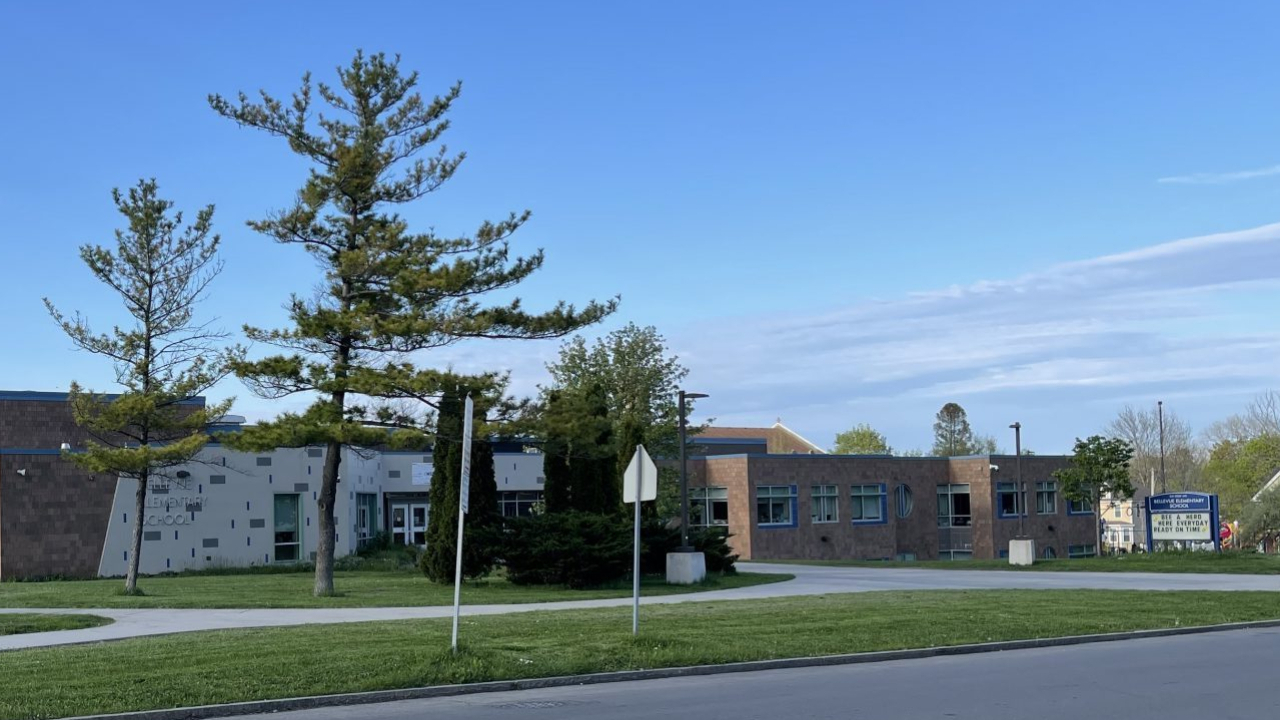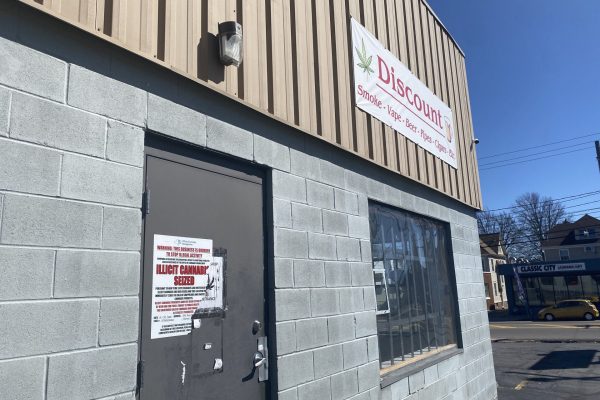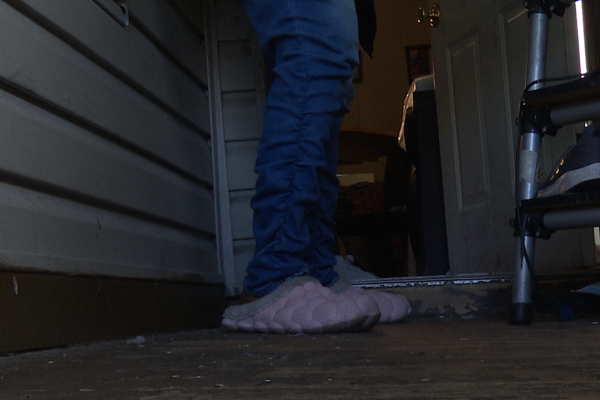
Written and Produced by: Anais Mejia, Julia Virnelli, Evan Butow, Avery Gingerich
Syracuse, N.Y. (NCC News) – Over the past several years the Syracuse City School District (SCSD) has been experiencing an intense teacher shortage. Teachers within the district are quitting, retiring and transferring to other districts at an alarming rate.
Just last year, 171 Unit 1 staff within SCSD resigned. The School district separates their staff into twelve different groups; Unit 1 staff is identified as “Teachers and Ancillary Staff”
Several teachers and school staff have expressed their concerns about the teacher shortage noting many teachers leave because of preventable issues. In a 2022 press release Gov. Kathy Hochul said that the state would need 180,000 new teachers in order to meet the district’s needs.
According to the U.S. Department of Education, NYS was down 3.9% in progress towards returning to pre-pandemic staffing levels. A percentage that falls among the higher numbers across the country.
One incident early this year brought attention to the issue of school violence and gave way to questions about how SCSD administrations handle behavioral issues. On Feb. 16 at Lincoln Middle School, a Syracuse school parent broke into the building and assaulted a teacher.
Lynzina Sutton was charged with second-degree assault and third-degree burglary. According to reporting by CNY-Central, the mother’s anger stemmed from bullying her daughter experienced at school that went unresolved by the administration.
In several interviews done with teachers and staff, they pointed out similar issues that have made schools within the district unsafe and undesirable places for teachers to work at.
Lack of Administration Support
Lack of administration support is felt across the Syracuse City School District. Teachers and school staff struggle to stay in buildings where support is limited and where a large disconnect exists between teaching staff and administrators.
Joyce Suslovic, was a SCSD teacher for over 30 years before retiring in 2021. Suslovic said that she retired largely because she felt disrespected by her school’s administration.
Suslovic said that when SCSD was under a remote learning model due to the Covid-19 pandemic teachers were told to pass students despite issues with attendance and engagement with class material.
“The entire faculty was told that we’re supposed to err on the side of the child and we need to find points and pass as many students as we can,” Suslovic said.
Despite Suslovic raising questions about this with administration, her and other teachers were still pressured to pass students.
“…once there were no Regents, the Regents were suspended during Covid, we were told to do everything we could to pass students,” Suslovic said, “And I don’t mean like, legitimately pass. Students showed up three or four times, you should pass that student.”
Suslovic believed that this was unconscionable and said that many teachers including herself saw this as the administration not treating teachers as professionals.
Jennifer Horn has been a teacher within the SCSD since 2002 and is currently a part of the teachers union as the 3rd vice president representing the Syracuse Teachers Association. Over the past 20 plus years, Horn says she has taught under both good and bad administrations.
Horn said that currently her school is under a very supportive administration but that she has seen how administrators often dictate the environment within school buildings.
“ In terms of the climate, we have had a real decline in our climate. As a matter of fact, we kind of had a good portion of our staff—a few years ago, we had about eight people transferred because of the lack of support,” Horn said, “And when kids know that they’re not going to be held accountable or their teachers aren’t supported, they take advantage of that and behaviors amped up.”
While Horn, a union representative, says she hasn’t seen many teachers leave her school recently, she knows issues persist in other SCSD schools. Horn says that this is overwhelmingly in relation to how administration works with teachers to solve issues of behavior and violence within the classroom.
School Violence
For Megan Giannino, it’s difficult to provide full support to SCSD students.
“It’s almost impossible to do what they need,” Giannino said. “We need more people, we need a better curriculum, we need this, we need that. It’s almost like we need the city to do more, not just the district.”
Before moving to West Genesee School District, Gianinno was a school counselor in Bellevue Elementary School. At Bellevue, Giannino noticed a shift in environment, school safety, and accountability.
One of the biggest differences Giannino notices is attendance. At SCSD, Giannino noted that some students struggle to make it to classes sometimes for weeks at a time.
“There’s not a level of importance to education,” said Giannino. “Kids don’t take school seriously anymore.”
As a result, it becomes harder and harder to control student actions and ensure a safe learning environment. Horn notices this phenomenon as well.
“I know across the district there are some buildings that have a very high turnover because the student behaviors are to a point where they’re not feeling supported and it makes a very disruptive learning environment,” said Horn.
Giannino has gotten so used to children sharing with her traumatic events and engaging in concerning behavior that she has almost become unreactive to it.
“There were times where kids were out on the playground and they had to come in because there were gunshots in the distance,” said Giannino, “As a school counselor, I am part of the emergency response team. I have to react and do what I can to make sure these kids are safe.”
Oftentimes, Giannino would have to make home visits to families, especially for children who were not attending school. Sometimes these home visits would make Giannino feel unsafe, whether they were in a bad neighborhood or she was put in an uncomfortable situation.
“I try to think, my first grader that goes to school lives here,” Giannino said. “I’m a full grown adult that is concerned, but that is their normal.”
Giannino has had children come into school that have experienced neglect, or are involved in violent fights, and even have had their homes shot at. This violence, when translated into school walls, becomes intense, and hard to manage without proper support.
Analiese DeRoberts, a former substitute teacher for SCSD, experienced this violence daily. She worked in a first grade classroom at Webster Elementary School last year, where she experienced these recurring issues.
“You have to be a certain type of person to work in the district because it is a lot to handle.” DeRoberts said. “The kids, the background, the support. I’ve obviously had kids have fights; kids hitting each other and kids trying to hit me.”
Suslovic also said that violence within the school she last worked at was an issue. Suslovic shared a story about a student who threw a phone at a teacher and was back in the classroom the next day despite the teacher voicing their discomfort.
“That incident that happened at Lincoln Memorial [Middle School] is that type of parental violence, a novel occurrence in the SSD,” Nicole Capsello, the Syracuse Teachers Association president said.
Overwhelmingly, school staff have expressed the need for school administrations to provide support to teachers in the face of school violence both at the hands of parents and students in order for teachers and staff to feel safe in schools.
Fear of Retaliation
Out of the 10 sources our team interviewed, six teachers and staff members requested to stay anonymous due to fear of district reprisal. Many of the sources still work within the district, are new to the district, or in some cases have already retired.
Out of the six anonymous sources, five of them cited lack of administrative support and violence as prominent issues within the district.
“I think people can get intimidated, sharing their experience,” Giannino said.
The stories shared by these anonymous sources echoes the sentiments of the other teachers and staff members we spoke to, often the stories detailed violent and shocking situations.
District Accountability
When the Newhouse Spotlight Team sought out a comment from superintendent Davis, responses were given by SCSD spokesperson Amanda Hull.
“The teacher shortage is not just affecting the SCSD, this is a national trend impacting schools throughout the country,” said Hull when asked why there is a teacher shortage in the SCSD.
While Hull said that the issue is widespread, the district is still working towards making various improvements in teacher recruitment and retention.
“We’re doing progressive recruitment where we’re going out to colleges and universities trying to find people who are in education fields,” Hull said. She said the district added a director of retention this past year and are working to support teachers so that they stay within the profession.
The district is also working to get teacher’s assistants with four year degrees certified, to ensure that all teachers and staff have certifications.
Recently, school safety has become a topic of discussion in the SCSD community. Teachers are fearful for their safety, and are looking to the administration for proper support.
“We want all our staff and students to come to work and school and feel safe. We are putting the most up to date security resources in our schools to ensure we have the tools needed to combat violence,” Hull said.
In Hull’s email response, she did not specify what these new resources and tools are, or when they are being implemented.
The Future of SCSD
When asked what could be done in schools to address violence, Capsello said there is a lot the administration can do to make changes in the district.
“There are definitely things that need to be done to our physical structures that can make us—you know, put us in a better position for safety. There are also policy changes that need to be made and just holding those policies up,” Capsello said. “Holding parents, community members and staff and students accountable to ensure that we are all following the policies and expectations, in order to keep everybody safe.”
Horn said that her current school administration at Webster Elementary has made an immense impact on the school’s atmosphere. Horn says that cohesive school staff which is primarily dictated by administration is what schools need.
“Most recently we have an administrator– who is a new principal, Dawn Kivlehan– but she is amazing,” said Horn, “She’s brought a lot of fun back to school. She’s really built up the sense of community both for the students and the staff. She is always accessible, her door is always open.”
Administration issues vary between school buildings, and change from year to year. Giannino shared that while her career in SCSD started out with strong and supportive administration, it ended with new administration in place, and teachers leaving as a result.
“My second year there administration had changed, principal and vice principal, which was good for probably like half of the year. But, towards the end of the year, there were going to be a lot of changes,” Giannino said. “A lot of people were unhappy.”
Despite the district noting that teacher shortages are a national issue, SCSD is struggling to manage the problem. Just this year, the district was scrambling to hire 40 teachers in time for the first day of school, according to a report done by Syracuse.com.
The reasons why teachers are leaving SCSD are compounded by several factors and vary from teacher to teacher, but Syracuse teachers and staff have overwhelmingly pointed to lack of administrative support and school violence when asked about why teacher shortages are impacting the district.




